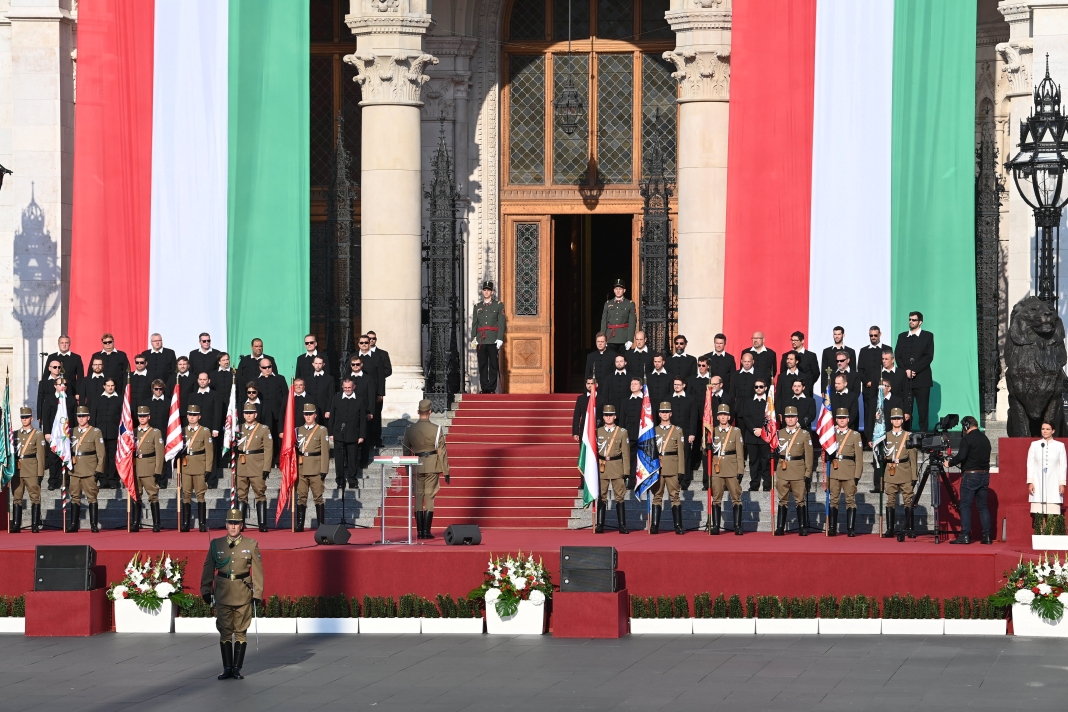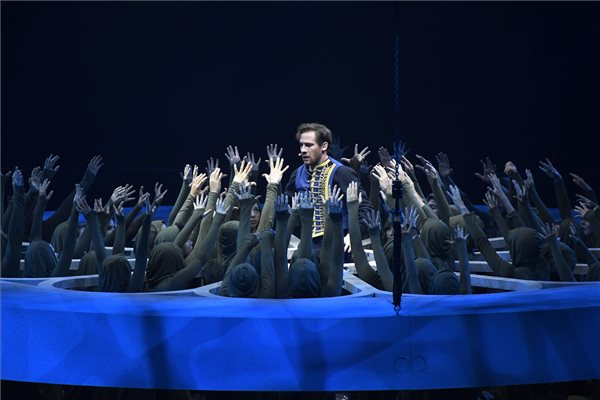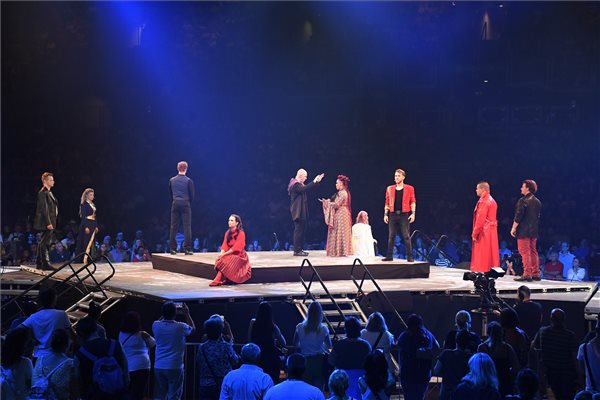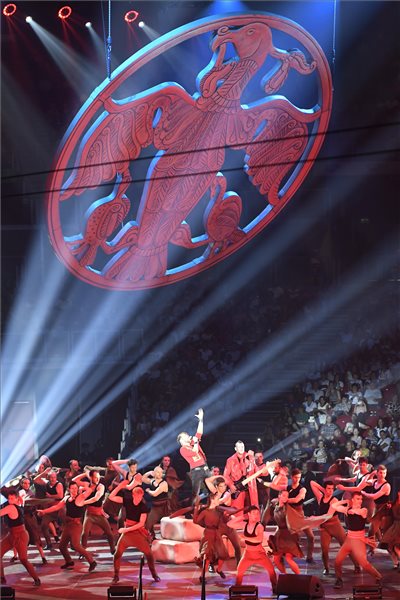
The central ceremony of the Ministry and the Hungarian Defense Forces was held at the Bálna Defense Center.Continue reading

Stephen, the King (István, a király) is a history-making work, a rock opera that is part of the Hungarian national collective consciousness, one of the most influential pieces of Hungarian musical theater, and one that is fascinating to everyone, regardless of their ideology, reports Magyar Nemzet.
For the fortieth anniversary of the operatic work, Péter Novák dreamed up an epic performance for the Papp László Budapest Sports Arena, which the audience could see twice on Saturday. Big ideas, big voices, exciting stage solutions, in short, a worthy performance was born.

Photo via MTI/Lakatos Péter
The 1983 performance of the opera on the King’s Hill (Királydomb) was the first, the best, the most memorable,
with famous Hungarian artists such as Gyula Vikidál, Gyula Deák Bill, Feró Nagy, and Miklós Varga.
The newest interpretation of rock opera can be seen as a symbol of Péter Novák’s theatrical socialization, as he has lived through many of its interpretations directly as a performer, choreographer, and director.
The interactive nature of the production was evident from the moment the tickets were purchased,
as the audience could choose to sit in the Stephen or Koppány section, thus taking on the role of a character at certain points in the performance.

Photo via MTI/Lakatos Péter
By breaking down what had been thought to be an impenetrable barrier between the audience and the performers, Novák allowed the 2,000 people in the audience to truly blend with the actors and singers. Just like at a football match, the two sets of fans took turns shouting “Koppány!” or “Stephen!” and they also sang each other’s lines. Hence, in the end, they fulfilled the director’s intention, bringing together two opposing poles in an attempt to strengthen a sense of togetherness, rather than extremes.
The most uplifting moment of the performance was when the thousands of people in the audience raised their telephones with the flashlights on and sang the song that conveyed the most important message: “Give us peace, Lord.” (“Adj békét, uram!”)
In addition to the six-piece rock orchestra, the symphony orchestra, and the children’s choir, the 100 to 200-person dance group also contributed to the grandiose performance.
Novák had noted earlier that the 40th anniversary performance was a celebration, not an experimentation, a direct updating and a message. The result was a valuable and enjoyable performance, proving once again that Stephen, the King is a masterpiece that is a contemporary work in its own right.
The opera is based on actual historical events, yet treats them quite freely. In the late 10th century, Géza, ruling prince of the pagan Hungarian people recognized that his people would not have a future if they did not establish a Christian state. He invited Catholic missionaries to his lands and let his son Stephen (Vajk was his pagan name) be baptized and brought up as a Catholic. Géza planned to have Stephen take over the country after his death, as was custom in Western hereditary monarchies. According to ancient Hungarian custom, however, the oldest male member of the family – in this case, a relative named Koppány – would have been the successor. After Géza’s death, Koppány started an uprising against Stephen, but lost and was killed in battle. In order to deter the pagans from further uprising, his body was quartered and the pieces exposed upon the walls of the main castles of the country. In the year 1000 or 1001, István received a crown from the Pope. He was crowned the first king of Hungary.
The creators (Levente Szörényi and János Bródy) of the iconic piece of art both attended the show for the 40th anniversary.
Via Magyar Nemzet, Featured image via MTI/Lakatos Péter